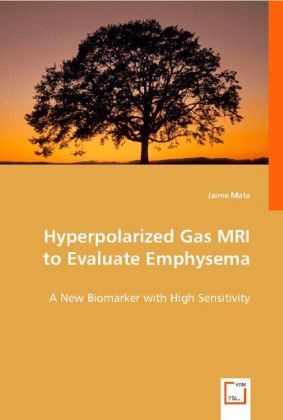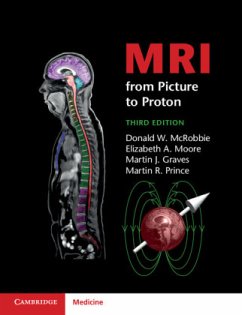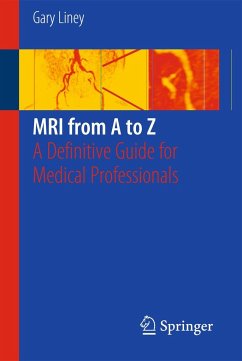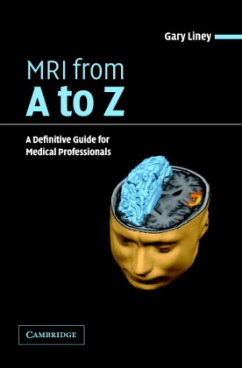
Hyperpolarized Gas MRI to Evaluate Emphysema
A New Biomarker with High Sensitivity
Versandkostenfrei!
Versandfertig in 6-10 Tagen
39,99 €
inkl. MwSt.

PAYBACK Punkte
20 °P sammeln!
Characterized by destruction of distal parenchymal airspaces, emphysema is a good candidate for the application of new magnetic resonance (MR) diffusion imaging techniques that use hyperpolarized helium-3 (He-3) and xenon-129 (Xe-129) gases to probe the restricted diffusion of gas in the lung. Besides the importance of detecting and diagnosing emphysema at early stages, which could reduce disease severity and maximize the effectiveness of treatment, the scientific community also needs a better biomarker for emphysema with a higher sensitivity than the gold standard, pulmonary function tests, a...
Characterized by destruction of distal parenchymal airspaces, emphysema is a good candidate for the application of new magnetic resonance (MR) diffusion imaging techniques that use hyperpolarized helium-3 (He-3) and xenon-129 (Xe-129) gases to probe the restricted diffusion of gas in the lung. Besides the importance of detecting and diagnosing emphysema at early stages, which could reduce disease severity and maximize the effectiveness of treatment, the scientific community also needs a better biomarker for emphysema with a higher sensitivity than the gold standard, pulmonary function tests, and without the ionizing radiation of computed tomography. A primary goal of this project was to create a reproducible animal model of emphysema disease, and with it demonstrate the efficacy, sensitivity and reproducibility of hyperpolarized He-3 and Xe-129 diffusion (ADC) measurements. Both He-3 and Xe-129 ADC measurements demonstrated excellent reproducibility, and strong correlations were found between these values and the distal airspace size as measured by lung morphometry. The last goal of this project was to investigate the characteristics of diffusion sensitization based on multiple bipolar gradient waveforms, which have the potential to extend access to much shorter diffusion times.












